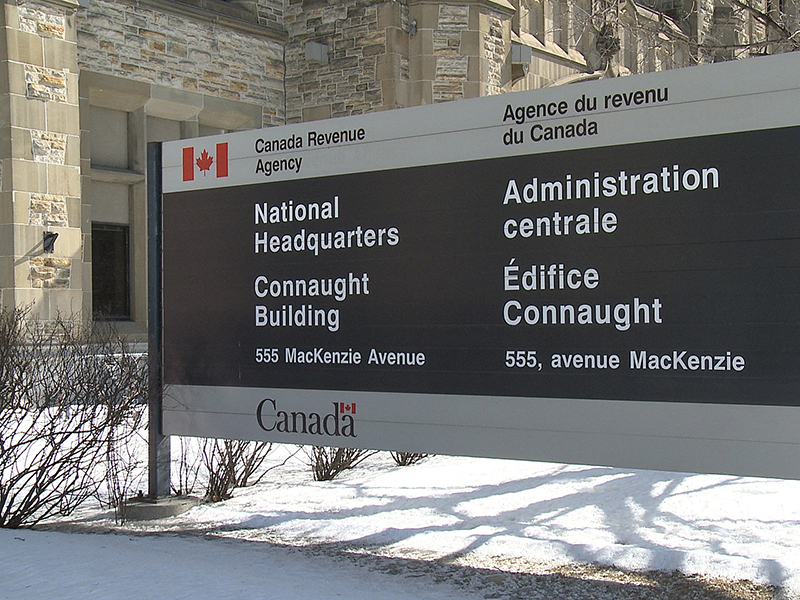
Two weeks out from the tax-filing deadline, the Canada Revenue Agency (CRA) says incorrect error codes are preventing some taxpayers from filing their tax returns.
“A system issue” is “triggering incorrect error codes in EFILE and NETFILE certified software and is preventing some users from being able to submit returns,” the CRA says on its website.
The agency says it is “actively working to resolve these issues as quickly as possible” and will provide further information when available.
“This is something at the CRA end,” said Ryan Minor, tax director with CPA Canada, referring to the error codes. “The returns have nothing wrong with them, but they’re getting flagged with these errors for some reason.”
If the problem isn’t resolved by the April 30 tax-filing deadline, the CRA says it will provide arrears interest and penalty relief “proactively” to affected taxpayers who file late after receiving an incorrect error code that could not be resolved when attempting to file on or before the tax-filing deadline.
To be eligible for that relief, the CRA says taxpayers must have attempted to submit their returns electronically on or before April 30, received the specific error code (the list of error codes is online), and been unsuccessful in resolving the error code despite taking the appropriate corrective action.
Accounting firms may have to deal with “lingering returns” that require attention after tax-filing season, Minor said. “This adds another complication to an already rough tax season.”
Another filing issue is the duplication of tax slips such as T4As and T4RIFs in CRA accounts. A discussion among tax practitioners on LinkedIn included the example of a taxpayer with duplicate T4As when auto-filling the tax return. The duplication, gone unnoticed, could affect clawback of old age security.
“The issue with the duplicate slips is very likely related to the problem with filing the slips initially,” Minor said. This year, changes were introduced to the electronic filing system that institutions use to file slips.
It seems that “slip filers who are thinking they weren’t successful filing a previous time are filing again,” Minor said. “And these are sophisticated places.” If big firms with staff and finance departments are having problems, “what are the smaller places supposed to do?” he said.
CIBC Mellon notified taxpayers whose pension payments it administers that the CRA’s system uploaded duplicate tax slips to some plan members’ MyCRA accounts. The firm says in its notice that it is working with the CRA to cancel the duplicated slips and instructs plan members who want to file their tax returns how to review the slips to confirm they’re duplicates.
“In general, there is a lot of trouble getting slips uploaded” this tax-filing season, Minor said, noting the problem of slips not appearing in the CRA’s portals or Auto-fill my return service. “You’ve got slips that are not there, and then you’ve got slips that are there twice to worry about.”
Regarding a taxpayer with duplicate T4As or other income slips, “you’ve really got to make sure the income that’s being reported is legitimate,” Minor said. “If there’s a double reporting of slips, you have to know to ignore the second one.” That could require extra communication between clients and tax practitioners, he suggested.
Minor said he’s asked the CRA if the agency can delete duplicate slips with no extra work on the part of slip issuers, and he’s waiting to hear back.* The University of British Columbia says on its website that it received confirmation from the CRA that duplicate T4As were deleted and should disappear from individual CRA accounts.
Minor also noted that duplicate tax slips will likely cause a problem with the CRA’s matching program in which the agency matches what a taxpayer reports with the taxpayer’s slips. Instead of automatically reassessing a taxpayer when a discrepancy arises, the CRA may have to be more cautious, he said, and potentially send query letters to taxpayers.
“There could be some more work after [tax-filing season] for taxpayers to clarify that slips are duplicate or not — depending on what the CRA is able to do to weed out these duplicate slips,” Minor said.
Tax practitioners have to be extra diligent this filing season, he said, given the complications with tax slips. “Preparers have to be doubly cautious to make sure they’ve got everything and they’re not double reporting,” he said. “It’s adding a lot of time on the part of preparers. The importing of slips is usually a time saver. Now, you’ve got extra steps for quality control.”
The CRA hasn’t said anything about extending the filing deadline because of duplicate slips. “You’re still required to get the physical slips, so it doesn’t seem like [the CRA] is going to go down the road of giving any kind of relief for filing deadlines, other than the capital gain–related one for impacted filers.”
When filing a return and using auto-fill, a taxpayer must ensure all fields on the return are filled in correctly and that the information is accurate and complete, the CRA says on its website. “It is your responsibility to contact the issuer for any missing or incorrect tax slips,” it says.
The CRA provided additional time for taxpayers reporting capital gains — in response to the deferred and now-defunct proposed increase to the capital gains inclusion rate — to meet their tax-filing obligations. The agency granted relief of late-filing penalties and interest until June 2, 2025, for individual filers and until May 1, 2025, for trust filers.
*Update: The CRA has since told Minor that it will rectify duplications without further action from slip filers, and slip filers should avoid submitting amendments to remove the duplicates. Return to the original sentence.